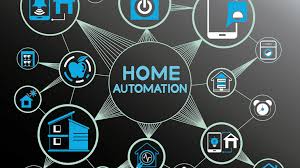Gone are the days when smart homes seemed like a luxury reserved for the elite. With advancements in technology and new, affordable devices entering the market, you can transform your regular home into a smart one without draining your bank account. Whether you’re looking to boost convenience, energy efficiency, or security, creating a budget-friendly smart home is entirely possible. This blog will guide you through steps to set up a Smart home while keeping your expenses in check.
Start With the Basics
To begin, focus on essentials that will make the biggest impact on your daily life. Smart lights, plugs, and voice assistants are the most accessible options in terms of price and usability. Did you know that smart bulbs can reduce energy consumption by up to 75% compared to traditional bulbs? They often cost less than $20 each and can be controlled via your smartphone or voice assistant.
Similarly, smart plugs are a great entry point, allowing you to control standard appliances remotely. Start by automating items you use frequently, like lamps, coffee makers, or televisions. You can typically find reliable smart plugs for under $15.
Choose the Right Smart Home Ecosystem
When building a smart home, compatibility matters. Selecting an ecosystem, such as Amazon Alexa, Google Home, or Apple HomeKit, will simplify connectivity and operation. Each system supports a wide range of devices, so your choice will depend on your preference and any devices you may already own.
A smart speaker or display (priced around $30–$50 for basic models) can serve as the central hub for your smart home. Look for seasonal sales or bundles, which often offer substantial discounts.
Focus on Energy Efficiency
Smart home devices don’t just add convenience; they can also save money in the long run. Consider installing a smart thermostat, which adjusts your home’s temperature based on your habits, cutting energy bills by up to 10%. Other budget-friendly options include smart power strips, which optimize electricity usage by shutting off idle devices. These small changes can lead to significant annual savings.
DIY Installation
While professional installation can be costly, most smart home devices are designed with ease of use in mind. Many come with step-by-step guides or app-based instructions, meaning you don’t need technical expertise to set them up yourself. Save money by handling the installation on your own.
Final Thoughts
Building a smart home doesn’t have to cost a fortune. By focusing on affordable devices and taking small steps, you can enjoy the convenience and savings of smart technology without breaking the bank. Start small, shop smart, and watch as your home transforms into a tech-savvy sanctuary.



